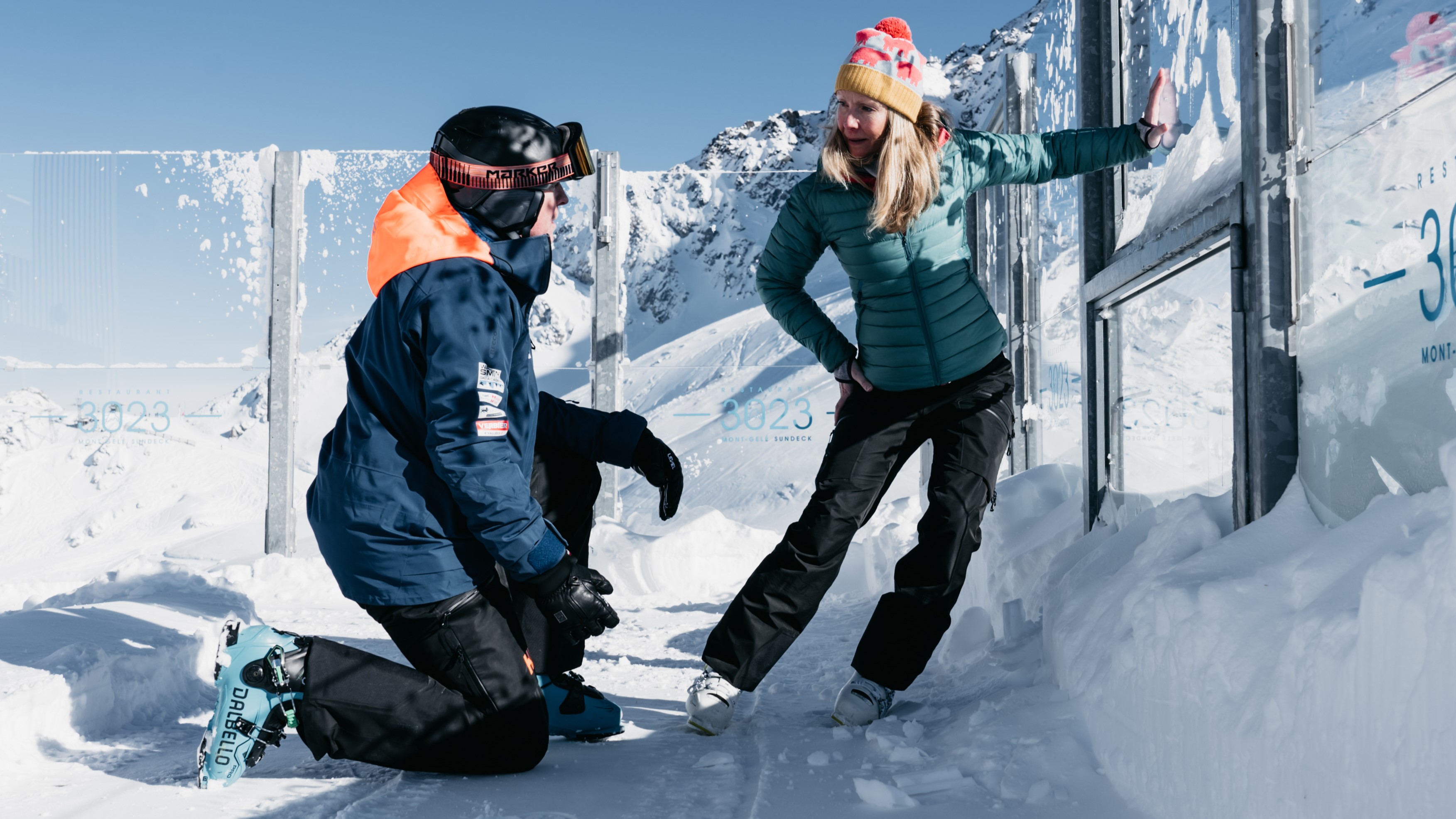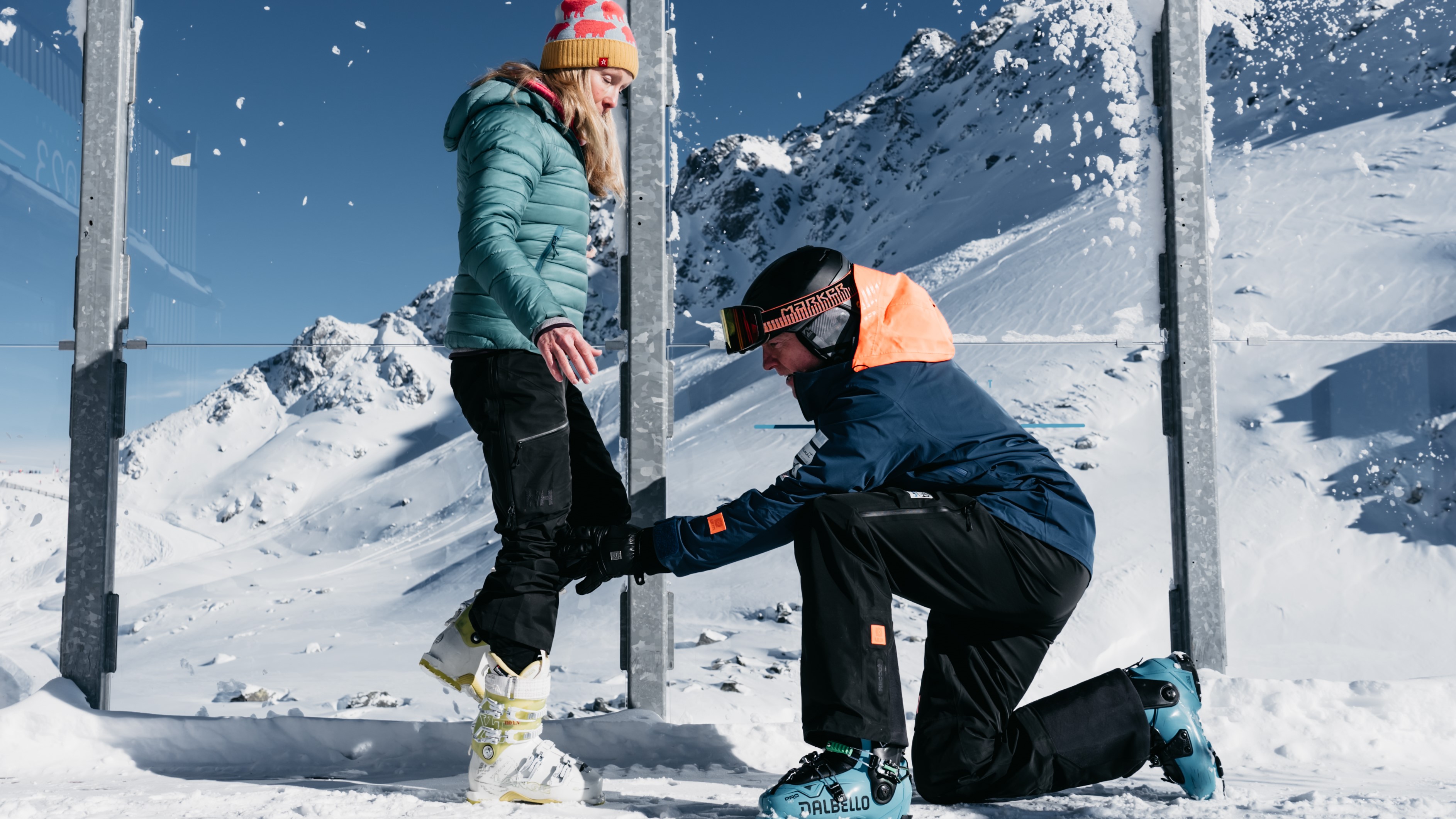
What’s the best way to get ready for ski season? Should you start squatting with weights to improve your leg strength and power into those turns? Get your trail running shoes on and head outdoors to increase your stamina for long days on the hill? Or unroll your yoga mat and work on improving your balance and overall mobility to help you with the dynamism of skiing?
I taught yoga in Vail, Colorado for 11 years and in that time, I saw every approach to ski conditioning under the sun. While different athletes, coaches and studios each had their own method, one thing we could all agree on was that skiing is a sport that requires some pre-season preparation.
I recently spoke to renowned ski instructor Warren Smith, founder of the Warren Smith Ski Academy in Verbier, Switzerland about the importance of getting ready for ski season, and how to go about it.
“This is actually really important,” he says of pre-season preparation. ““The classic thing we see is people not doing their prep work. It’s where people are at the highest risk of injury and I think the more we can get that message out, the more it helps the sport of skiing in general.”

Smith is one of Britain’s leading professional free skiers and an Internationally Qualified Performance Coach and Instructor who has earned a name for himself for the constant research and development he carries out combining skiing technique, biomechanics and physiology. I first came across him on the Channel 4 reality television show The Jump, where he trained celebrities in the Austrian Alps, but we met in person earlier this year when I was on a press trip to Verbier.
At that time, I’d been skiing for 20 years but was aware that my technique was scrappy at best and, having had two knee surgeries in 2017 and 2019, had lost a lot of my confidence. But in just a couple of hours of skiing with Smith, in quite deep powder no less, I felt like I had finally learned how to ski, so I have a lot of faith in his techniques and methods.
Now, I know what you’re thinking – I can’t afford to fly to Verbier and train with Smith. Well, the good news is you actually don’t have to. While an in-person session comes highly recommended, Smith is incredibly generous with his knowledge, and has heaps of online tutorials to help skiers with technique.
“We believe there's loads can be done at home to get people firing up and ready for the skiing,” says Smith.
In this article, he talks me through the main areas where you’ll want to focus for the season ahead, and you might be surprised at how easy it can all be.

“Get people switched on before they go”
Whether you live in the mountains or are just planning on taking a ski trip this year, you’re probably thinking that it’s important to ramp up your workout sessions ahead of time, whether that means swimming faster, running longer or even taking ski conditioning classes.
Improving your general fitness can certainly help you build your stamina for skiing, and is also just a good idea for general health, but as Smith points out, it’s often not really enough to help your body meet the unique demands of skiing.
“Let’s say you go swimming or do yoga every day, you’re not in bad physical shape, so that’s a great start, but the reality of it is there are movement patterns in skiing that you just don’t do in everyday life.”
If you’ve ever been skiing, you’ll know that no amount of running downhill can really prepare your quads for the near-constant eccentric contraction required of your quads in skiing, and no amount of twists and Half Moon poses in yoga really compares to the power needed to execute a clean turn. So even though being in good shape to start with won’t hurt, it’s knowing exactly what areas and movements to train that can get you up to speed.
“The unfittest people can actually bring themselves on par quite quickly when they know what content to go over,” says Smith, who describes pre-season preparation as simply “getting people switched on before they go.”

“There are places where everyone lacks range of movement”
When it comes to getting ready for ski season, Smith advises giving yourself at least three weeks of training in the run up to your first ski day. Though endurance training and general leg strength will always help you on the hill, Smith says that the most economical approach is to focus on the areas where almost all of us lack mobility.
“These are places where we know everyone always inherently lacks the range of movement every time they try and perform the sport.”
If you have to pick just three areas to work on for improvement and injury reduction in skiing, here’s where Smith recommends you focus:
1. Ankle flex range
Smith explains that obviously building strength in your legs is crucial, but a lot of the important work comes in getting yourself ready to make turns while wearing ski boots, which are inherently stiff, tight, and difficult to move in.
“Part of it is just trying to get yourself and your head around and used to wearing your ski boots again, because more times than not you haven’t been in them since last ski season.”
Most skiers flex their knees more than their ankles, which Smith explains can be down to limited ankle mobility, poorly fitting ski boots or overcompensation patterns.
If you’ve ever worn a pair of ski boots, you’ll agree it’s much easier to bend and straighten your knees than flex your ankles in them. What this does, however, is cause you to lean back and rest over the middle and back of your skis, fatiguing your leg muscles and placing extra strain on your knee joints. To correct this, Smith recommends developing ankle flexibility as a functional movement pattern that has very good mobility and stability.
“If you look at ankle movement from that point of view you’d be off to a flying start.”
You can learn more in his tutorial on ankle flex range, and start by using the exercise below to improve ankle mobility and keep your weight forward, even when you’re going fast.
2. Lateral control
Even the fittest among us tend to rely on symmetrical, short-range movements in the sagittal plane – think about the forward movements of running and cycling for example. In skiing, however, every time you turn your two legs are doing something different and this requires you to work on strengthening an entirely different muscle group to improve your turns and avoid injury.
“Often, people are quite a bit weaker when it comes to lateral control. We need it in skiing because we’ve got to control two skis and your skis can split apart, which stresses your knee joints.”
Your adductor muscles are those inner thigh muscles which you recruit to keep your skis close to each other – something I discovered I was dismally bad when I started out with Smith – while your abductors on your outer hip and thigh help you initiate each turn. Though Smith says most of us have about 20 to 30 percent difference in these muscles between one side and the other, the following tutorial can help you to build strength and improve what he calls your skier symmetry, which will mean your weak side in your turns won’t feel quite so inefficient.
3. Steering range
Leg steering range is what Smith describes as the power that comes from your legs when you rotate from the balls of your femurs, otherwise known as hip joint mobility, rather than doing all that twisting in your spine or at the knees.
“If people aren’t aware of this, usually one side of the body weakens. If we can switch on the steering mechanism in your legs, you’ll be less likely to upper body rotate and hip rotate and you’ll be less likely to stress the knee joints.”
Muscular tightness, structural inability to rotate your femur bones and years of patterning can all inhibit this movement, which means you’ll start turning from your shoulders sooner. This makes you more vulnerable to falling and injuries, and starts you out in a weaker position heading into the turn, which Smith says can massively affect your confidence.
If you suspect hip mobility may be at the root of your skiing performance issues, take Smith’s Steering Range Test and try the following accessible exercise to improve hip mobility.







